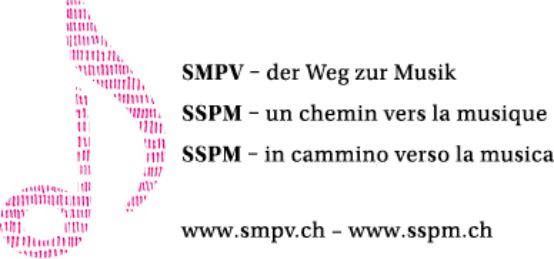A unique training model

The authorization of the Master's degree courses in the Music Department of the Kalaidos University of Applied Sciences marks the end of the former SSPM studies. This is an opportunity to look back over the hundred years of this unique training model.
In 1911, the Swiss Musicians' Association was invited by the International Society for Music Pedagogy to become a national member of this newly-founded association. The ASM felt that it was not competent to do so, and recommended that it join the Association Suisse des Maîtres de Chant et de Musique, which immediately accepted the invitation. It took the opportunity to adopt a new name - Société suisse de pédagogie musicale - and to formulate new, more ambitious statutes, clearly focused on music pedagogy. Its aim was to promote high-level musical education in Switzerland. It also decided to offer its own diploma examinations. The basic idea was to offer the many Swiss musicians working in their field without any formal training the opportunity to prove their skills in an examination and obtain a diploma.
The first SSPM diploma examinations were held in Zurich on April 26, 1913. The rules and regulations of the time have unfortunately been lost, but it seems that the requirements were a strong deterrent; of some sixty interested parties, only five sat the exams. Two piano diplomas, an organ diploma, a violin diploma and a conducting diploma were awarded that day. At first, the title was not officially recognized. It's difficult to get an idea of the instrumental level, but there's every reason to believe that it was at least comparable to that of the conservatories of the time. From these early examinations onwards, the SSPM's aim was not to professionalize good amateurs but, in line with the new statutes, to improve music teaching both in the private sector and in schools, so that it gradually reached a professional level.
At first, only examinations were offered, but gradually SSPM studies proper were developed, with an emphasis on pedagogical skills, as witnessed, for example, by the introduction in 1991 of compulsory methodology courses, or the separation of practical and pedagogical examinations.
As far as official recognition of diplomas was concerned, the situation was always rather confused. However, while some cantons never officially recognized SSPM titles, this rarely had any negative effects in practice, as diplomas were generally recognized by conservatories.
Who were the SSPM graduates? Klaus Wolters distinguished three main categories: students who, for professional or personal reasons, are unable to pursue full-time studies; students whose professors do not teach at a university; and, finally, exceptionally gifted musicians for whom this model enables them to continue their studies without having to abandon a career already underway as a concert performer or teacher, for example.
With the Bologna reform, the requirements for recognition of SSPM diplomas have changed completely. The SSPM reacted to this new situation by founding the Swiss Academy of Music and Music Pedagogy ASMP in 2005. The ASMP was given the task of completing SSPM studies and creating a Bologna-compatible professional training program. Accreditation of the Bachelor's degree courses and approval of the Master's degree courses - now offered as part of the Music Department of the Kalaidos College of Music - were important milestones on this path. Thanks to these new studies, the future of this unique model of private music training is assured, we hope, for a very long time to come.








